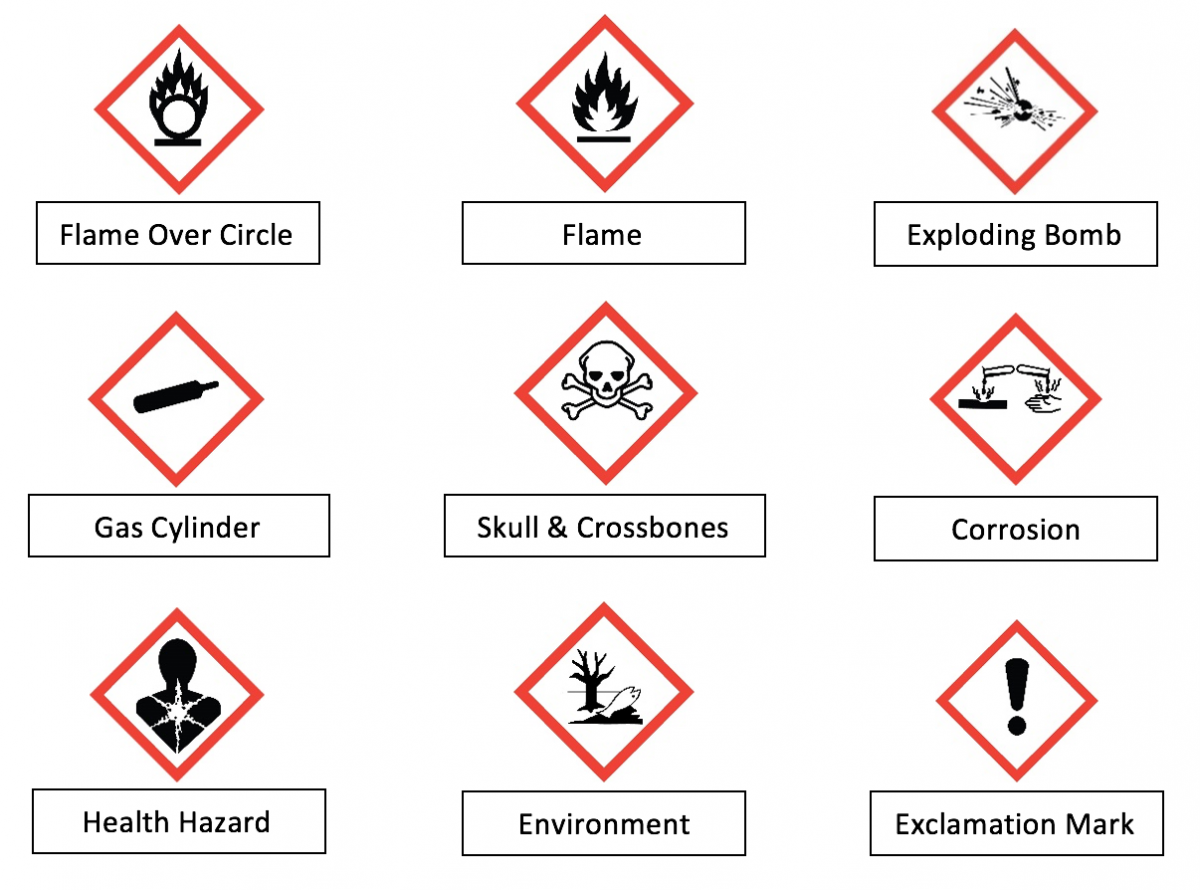True or False:
Biological agents can cause three types of illness: infections, allergies, and poisoning or toxic effects.
True
What is the most serious form of heat illness?
a. Heat rash
b. Heat cramps
c. Heat stroke
d. Dehydration
c. Heat stroke
Some common safety hazards are:
Trip and fall, electricity, falls from elevation, and trenching
What is an SDS and why is it important?
Safety Data Sheets
Hazards associated with the chemical you are using; provides precautionary measures
True or False:
As universal precaution, all blood, body fluids shall be considered infectious until proven otherwise.
True
True or False:
Wearing chemical protection clothing increases the risk of developing heat illnesses.
True
Some common electrical hazards are:
a. Contact with overhead powerlines
b. Damaged Power cords
c. Unlabeled circuit breakers
d. All of the above
D. All of the above
These pictograms are part of the ______.

Globally Harmonized System
True or False:
As universal precaution, all blood, body fluids shall be considered infectious until proven otherwise
True
Four types of ionizing radiation are
a. Alpha, beta, UV light, x-rays
b. Alpha, beta, gamma and x-rays
c. Radar waves, beta, gamma, UV light
d. None of the above
b. Alpha, beta, gamma and x-rays
True or False:
Sloping, benching, shoring, and shielding are types of trench protective systems.
True
What does the blue color signify?
Health Hazards
What are the bloodborne diseases that cause most concern in occupational settings?
a. Hepatitis B, Hepatitis C, and HIV/AIDS
b. HIV/AIDS, flu, and Hepatitis C
c. Hepatitis A, Hepatitis B, and Hepatitis C
d. None of the above
a. Hepatitis B, Hepatitis C, and HIV/AIDS
Three methods to keep exposure As Low As Reasonably Achievable are:
a. Time, distance, shielding
b. Time, distance, shoring
c. Time, distance, height
d. Distance, depth, height
a. Time, distance, shielding
True or False:
Lock-out/tag-out procedures can help protect you from electrical danger.
True

What does the W tell you?
Water reactive
Name several prevention measures against airborne pathogens.
Ventilation, workplace hygiene practices, PPE, masks
Four basic steps required by Cal/OSHA to prevent heat illness are:
a. Provide training, potable water, adequate shade and written procedures
b. Provide protective clothing, potable water, access to shade, and written procedures
c. Provide cooling fans, enough water, access to shade, and training
d. None of the above
A. Provide training, potable water, adequate shade and written procedures
In the year 2021, what is OSHA's Top Most Cited Safety violation standard in Construction?
a. Eye and Face Protection
b. Fall Protection
c. Ladders
d. Control of Hazardous Energy (Lockout/Tagout)
b. Fall Protection
Name the Hierarchy of Controls, from most effective to least effective.
Elimination/Substitution
Engineering Controls
Administrative Controls
PPE